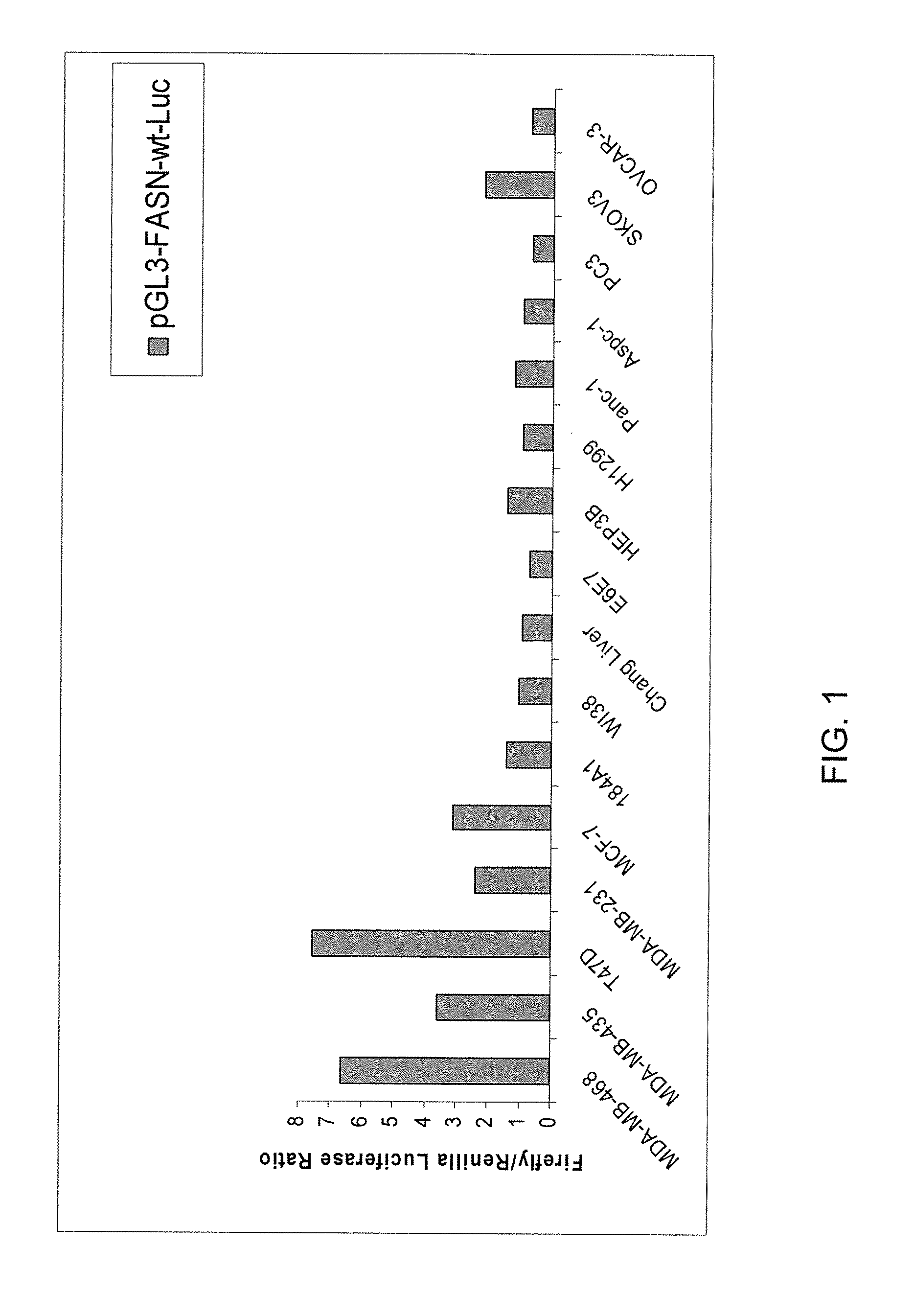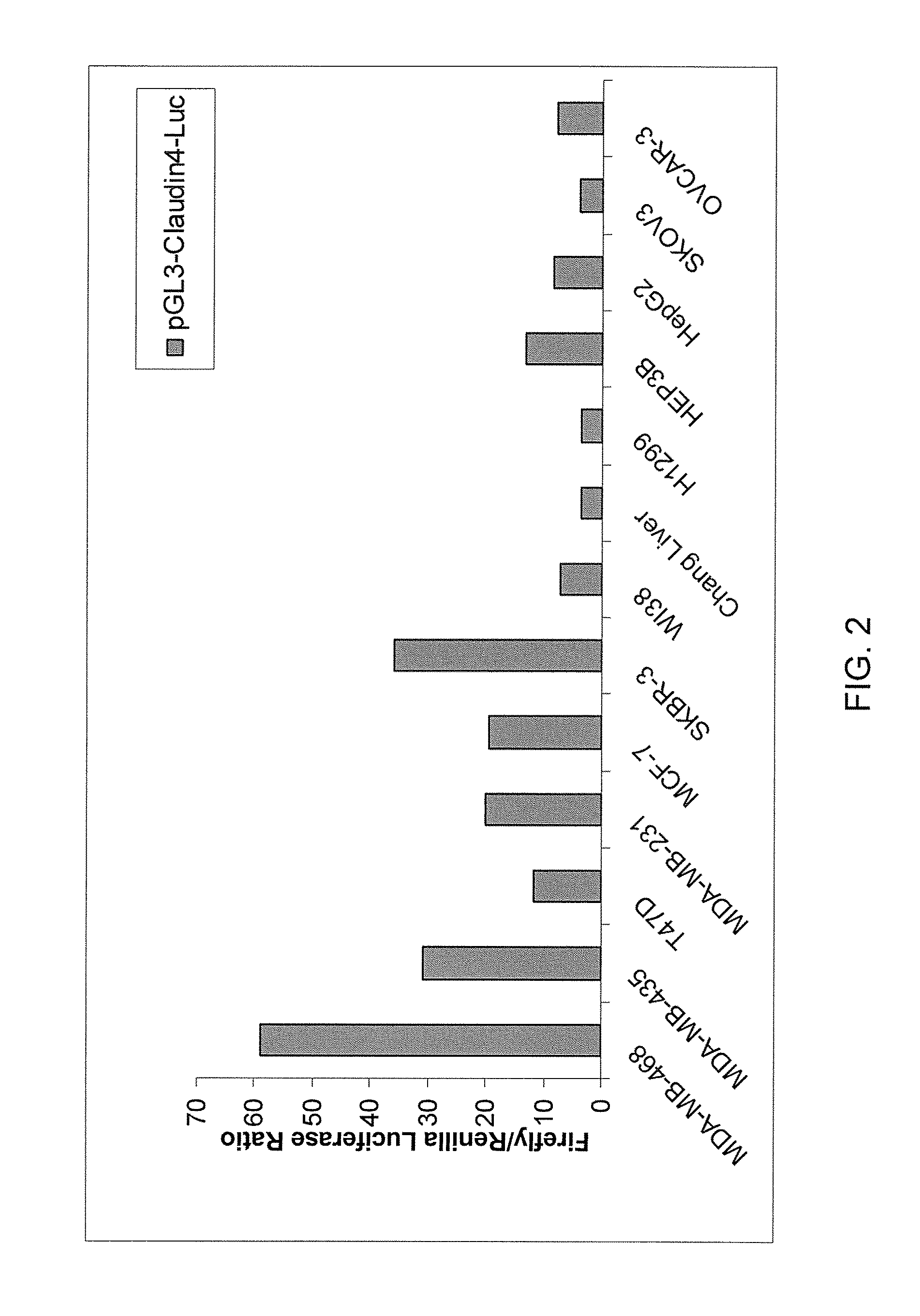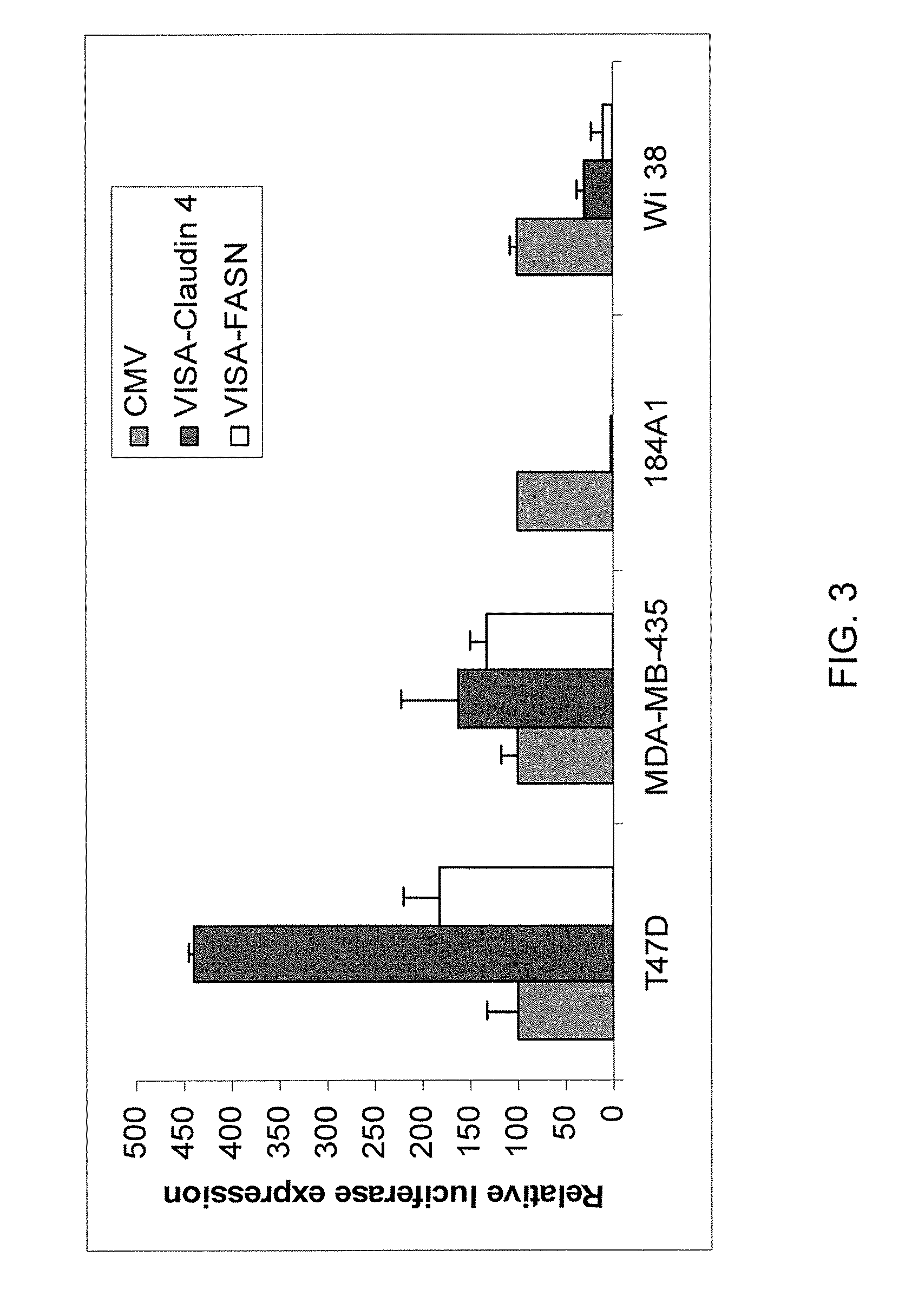Cancer-specific promoters
a cancer-specific promoter and promoter technology, applied in the field of cancer biology, can solve the problems of low selectivity of tumor cells, side effects of normal tissues, current cancer therapies, etc., and achieve the effects of reducing tumor size, increasing survivability, and great utility in prevention and/or treatmen
- Summary
- Abstract
- Description
- Claims
- Application Information
AI Technical Summary
Benefits of technology
Problems solved by technology
Method used
Image
Examples
example 1
Breast Cancer Tissue-Specific Expression
[0244]Current breast cancer (BC) therapies, such as chemotherapy (CT) and radiotherapy, have low selectivity for tumor cells and side effects for normal tissues. To minimize the side effects, these therapies are generally given in an intermittent manner, allowing normal cells to recover between treatment cycles. However, during the recovery period, some surviving cancer cells become more resistant to the treatment because of gene mutation. Consequently, cancer recurrence or progression may occur. Tumor-targeting gene therapy can minimize treatment side effects and the risk of developing resistance by acting on the tumor-specific signaling pathways. In the present embodiment, breast cancer-specific promoters are used for breast cancer-targeting gene therapy of an exemplary therapeutic polynucleotide, mutant Bik.
[0245]FIG. 1 shows transient luciferase expression of fatty acid synthase (FASN) promoter in human normal and cancer cell lines. Cells ...
example 2
Ovarian Cancer-Specific Promoters
[0248]FIGS. 4A-4B show activity of selective promoters in ovarian cancer cell lines and normal cells. In FIG. 4, hTERT and Survivin promoters are active in ovarian cancer. In FIG. 4A, there are exemplary constructs of candidates for ovarian cancer promoter, including a diagram of the promoter-driven luciferase report plasmids. In FIG. 4B, a panel of ovarian cancer cell lines and normal lung fibroblast cells (WI-38) were transiently co-transfected with plasmid DNA indicated and pRL-TK. Forty-eight hours later, dual luciferase ratio was measured and shown as RLU (ratio) normalized to the Renilla luciferase control. The data represent the mean of four independent experiments; bar, SD.
[0249]FIGS. 5A-5B show comparison of CMV, TV and SUV promoter activities in ovarian cancer cell lines and normal cells. In FIG. 5A, there is a schematic diagram of exemplary engineered hTERT- and survivin-based constructs in the pGL3 backbone (VISA, VP16-GAL4 intergrated sy...
example 3
Ovarian Cancer-Specific Expression or Breast Cancer-Specific
[0251]The present embodiments utilized ovarian cancer-specific promoter sequences to control expression of a therapeutic polynucleotide, for example a mutant Bik polypeptide. Exemplary methods and compositions directed to this goal are described in this Example. Although this example refers to ovarian cancer-specific expression this is merely an illustrative embodiment and one of skill in the art recognizes that this exemplary description may be applied analogously to other embodiments, such as for breast cancer.
[0252]An exemplary embodiment of WPRE enhancer may be released from pGEM-3Z-WPRE by Asp718 / SalI digestion and inserted into the Small sites of pGL3-basic by blunt ligation to produce intermediate pGL3-Luc-WPRE. Plasmid pGL3-basic may then be digested with XbaI, Klenow blunted and annealed to the blunted Asp718 / SalI WPRE fragment of intermediate pGL3-Luc-WPRE to give pGL3-Luc-WPRE. The ovarian tissue-specific regulat...
PUM
| Property | Measurement | Unit |
|---|---|---|
| volume | aaaaa | aaaaa |
| temperature | aaaaa | aaaaa |
| ionic strength | aaaaa | aaaaa |
Abstract
Description
Claims
Application Information
 Login to View More
Login to View More - R&D
- Intellectual Property
- Life Sciences
- Materials
- Tech Scout
- Unparalleled Data Quality
- Higher Quality Content
- 60% Fewer Hallucinations
Browse by: Latest US Patents, China's latest patents, Technical Efficacy Thesaurus, Application Domain, Technology Topic, Popular Technical Reports.
© 2025 PatSnap. All rights reserved.Legal|Privacy policy|Modern Slavery Act Transparency Statement|Sitemap|About US| Contact US: help@patsnap.com



